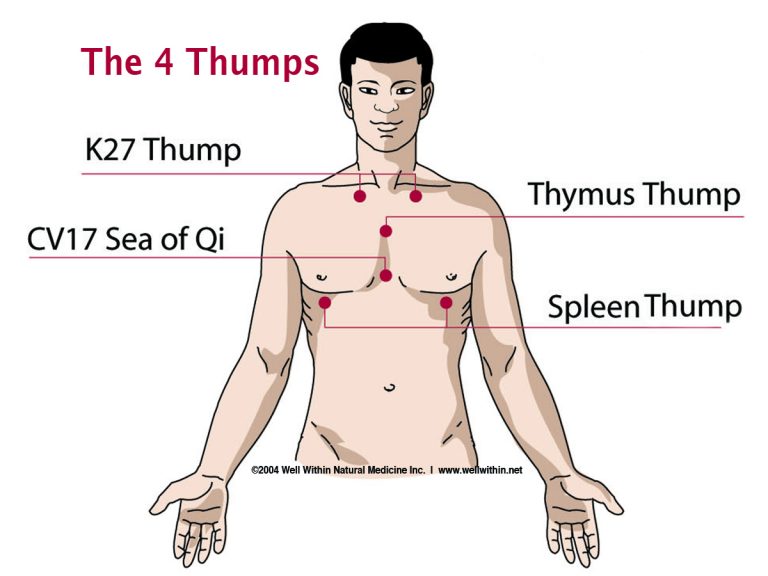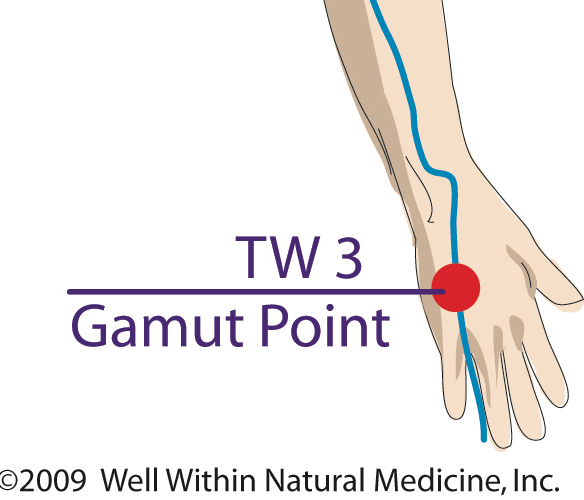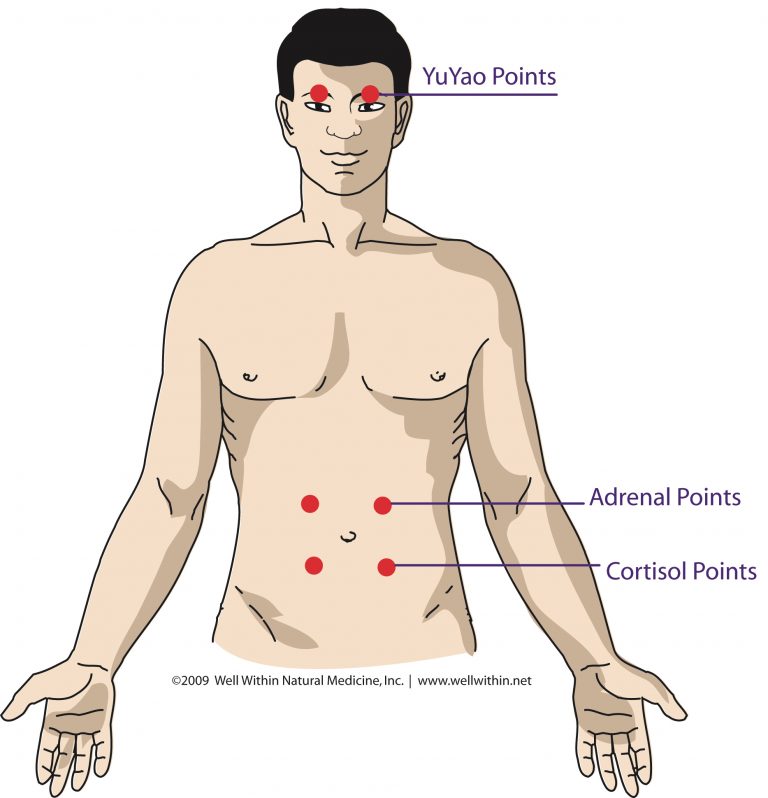Energy Medicine for Stress Relief
Staying Healthy During Life’s Challenges
We all experience life challenges. Whether it is a divorce, supporting aging parents, loss due to death, changing jobs, illness or relocating, it is inevitable that we will all experience significant changes as we move through life. Sometimes we struggle with our day-to-day life experiences such as supporting a family, managing finances or handling the constant barrage of information from various media sources.

What is Your Perspective of Life’s Events and Stressors?
When we experience stress, our bodies quickly react by releasing the hormone adrenaline into the bloodstream. Adrenaline elevates our heart rate and blood pressure, tenses up our muscles and speeds our breathing, preparing us to confront the threat or run for our lives.
People respond very differently to stress. Some view life’s difficult events and circumstances as opportunities to grow and expand. These individuals understand that all things in life are impermanent and will change. With this perspective, they do not hold on to fixed ideas about how things should be or how they were in the past. It does not mean that they do not experience emotions about the event, but it does mean that they do not get stuck in the emotion. Instead, they feel the emotion and release it as it arises. They reach out for support and treatment and remain open to healing. They try to stay present with the current circumstance and focus on what needs to be done in the present moment, rather than worrying and catastrophizing what might happen in the future.
Another common perspective is viewing these life challenges as a personal burden in one’s life. Individuals with this viewpoint see challenges as impositions rather than natural occurrences in life. They can be angry and frustrated that the stressor is happening to them and may have little insight into the larger picture. They can be very absorbed in the stressor and allow it to become all-consuming, which ultimately causes additional stress in other areas of their lives. They can be reluctant to let go of the stressor as it has become “their story,” which often masks other emotional issues that need to be addressed. While it is important to have support with stress, if it is chronically reviewed and repeated, it can create a negative feedback loop that makes it more difficult for the individual to see the situation clearly.
“If you believe that life is a series of stressful events to be endured, then that is what life will offer you.”
My experience has been that most people hold some combination of both perspectives described above.
It is important as energy practitioners to understand what our own perspective is for handling life’s challenges. Is it a healthy perspective that serves you well? Or do you feel drained by life’s challenges and have less resilience as you age to cope with stress? If you believe that life is a series of stressful events to be endured, then that is what life will offer you. If you believe that life is full of opportunities to grow and expand, that is what life will offer you. As practitioners, we sometimes consciously and unconsciously pass on our personal perspective while working on our client’s via energy, so we must energetically be clear about what that perspective is to keep healthy energetic boundaries. Once we are clear about our own perspective toward difficult life events, it is helpful to take an inventory of our current life stressors. Sometimes we are moving through life so fast we do not even realize the degree to which we are stressed. And, it is helpful to look at what you are doing to take care of your stress.
Personally, I have found it easier to handle life stressors when I am committed to a daily energy practice of self-care. As healers, we can easily spend too much time taking care of others and not enough time taking care of ourselves. But we have to remember that because everything is energy, our work is most effective when we are healthy and balanced.
Below are some of my favorite Energy Medicine self-care practices:
1. Spending Time in Nature – take time to get outside and find your happy place. Find a place in nature that resonates with you. For me, I immediately feel better when I am at the beach enjoying the calm of the waves and feeling energetically recharged by the sun. How much time are you spending connecting with nature? And what type of nature experience do you most resonate with?
2. Grounding – expanding on #1, try walking barefoot in the grass and bury your feet in the dirt or sand as you invite Mother Nature to absorb your stressors. Grounding is about nourishing our Yin energy and connecting to a vortex that comes up from the earth through the bottom of our feet. It feels even more calming and relaxing when you can put your entire body flat on the grass or the sand. This is what I call “earthing” the old-fashioned way . . . no grounding sheets or copper rods required. I also enjoy leaning my back against a tree. The Urinary Bladder meridian governs your nervous system and runs up and over your brain and along your entire backside. It is beneficial to periodically clear this electromagnetic static charge naturally from our energy field to calm our nervous system.
3. Daily Energy Routine Practice – In 1998 Donna Eden released her first book Energy Medicine sharing with the world what she calls the Daily Energy Routine designed to keep your energies humming for optimal health and wellness.1 This includes a series of basic energy exercises that can easily be used for daily self-care.

There are many resources for the Daily Energy Routine and other tips at the end of this article in both video and written format.1, 2, 3 If you have not already, I encourage you to make a commitment to doing the Daily Energy Routine. Begin with a few of the exercises and increase slowly to avoid overwhelm. Soon you will begin to feel comfortable modifying your routine by adding additional exercises based on your own unique health concerns.
My favorite Energy Medicine stress relief exercises are: holding the Front and Back Neurovascular Points by placing one palm on your forehead and the other behind your head while focusing on the stress; using the Do each of these exercises as soon as you feel stressed. While focusing on the stress, breathe in through your nose and out through your mouth. Stay with the stressor in your mind’s eye until the emotional charge begins to dissipate.

Many of the clients I work with in-office and via Skype are Energy Medicine Practitioners. I applaud them for receiving regular energy healing sessions and mentoring to support their own personal Energy Medicine practice. Take a moment to consider the last time you received a full energy healing session. If it has been awhile, you may want to consider finding a practitioner to support you.
Do not Over Commit – Do not add more to your schedule than you can energetically support. This is another big one for me to pay attention to as it ends up leading to adrenal exhaustion. It is not uncommon for those of us in the healing profession to naturally want to give and serve others and they can often find it difficult to say no and to take time out for yourself. Take an inventory of your work and life balance. How many clients do you see in a day? How much time do you spend with each client? Are you constantly late or running behind in your schedule? How many days a week are you working? What are you doing for fun? Hopefully, amongst these questions you will uncover the clarity you need to make supportive changes.
If you are over-committed and notice emotions or stressors are coming up for you, then I recommend you try using one of the stress relief techniques mentioned in #4 above to shift your energy.8, 9
If you are feeling burned out or exhausted, you may find this easy energy exercise for adrenal support to be helpful. Begin by placing your thumb and middle finger of one hand in the hollow found in the middle of your eyebrow or at the outer edges of each brow. With your other hand, go one inch above your navel and one each out to each side as you use your thumb and middle finger to hold the Adrenal Gateway Points. Focus on your breath as you hold them for 3-5 minutes. Repeat with the Cortisol Points, which are one inch below and out from your navel.10 You can harmonize them together with the Hormone Hara Balancer (see the video link below).11

I had stressful challenges in my life before I had access to Energy Medicine tools and these challenges were actually the catalyst for me to make a career change — really a life change toward health and wellness. Now I am grateful for these gifts and appreciate all they have taught me on my path. Stress has an energy all its own. It can sweep us off our feet in an instant. It can stop us in our tracks and it can put us down for the count. By working with your own energy systems to change patterns, habits and limiting beliefs, you can take back your power and your health.
As Energy Medicine Practitioners, it is imperative to stay grounded, centered and balanced on a daily basis to more easily maneuver the ebb and flow of our lives. In 400 BC Hippocrates (the Father of Medicine) said, “The natural healing force within us is the greatest force in getting well.” Donna Eden would say “Energy Medicine has been called the medicine of the future, but it also empowers you to adapt to the challenges of the 21st century and to thrive within them.” Now, more than ever, is the time to connect into your own natural healing force and Be Well Within.
Resources
1. Eden, D., & Feinstein, D. (1998). Energy Medicine. New York, NY: Tarcher/Putnam.
2. Smith, M. and Macdonald, P. (2009). Energy Medicine: Your Personal Health and Wellness System for Today eBook. Click here for more details.
3. Smith, M. (2017). The Daily Energy Routine Video. Retrieved from the Daily Energy Routine resources page
4. Rosch, P. (1991, May). Job Stress: America’s Leading Adult Health Problem.The USA Today, pp 42-44.
5. The American Institute of Stress https://www.stress.org/americas-1-health-problem/
6. Childre, D., & Martin, H. (2000). The Heartmath Solution. New York, NY: HarperOne.
7. Rea, S. (2014). Tending the Heart Fire: Living in Flow with the Pulse of Life. Boulder, CO: Sounds True.
8. Smith, M. (2009). Stress Relief Quick Tip Video. Retrieved from the Stress Relief resources page
9. Smith, M. (2014). The Lotus Blossom Video. Retrieved from the Lotus Blossom resource page
10. Smith, M. (2009). Adrenal Fatigue Quick Tips. Retrieved from the Adrenal Fatigue resource page
11. Smith, M. (2014). Hormone Hara Balancer Video. Retrieved from the Hormone Hara Balancer resource page
More On Stress Relief
Stress Relief Quick Tips
A Stress Response can actually be quite helpful for certain life threatening situations. When one senses “danger” the body automatically kicks into the “fight-or-flight,” reaction or stress response. This is helpful if you are in real, imminent danger such as being mugged or in the midst of a natural disaster. In these types of situations the stress response is just what you need and can ultimately save your life. Problems occur when you stay stuck in the stress response for situations that are not life threatening. You may not be aware of the impact stress is having on your life and your loved ones. In the case of chronic stress, you may have created an energetic stress pattern that kicks in even with minor situations.
Some signs that you are on Stress Overload and may need help undoing the energetic stress pattern that has been created include:
- repeated bouts of colds and flu
- chest pain, rapid heart beat
- consistently feeling overwhelmed
- inability to focus or concentrate
- negativity, negative thoughts and negative talk
- racing thoughts
- general feeling of anxiousness or nervousness
- feeling depressed or sad
- using food, alcohol, drugs, shopping, gambling, etc. as a means to
- relieve your stress
- irritability, moodiness, anger
- always worrying
- gaining or losing weight
- sleep problems either too much or not enough
It is important to note that these may be signs of other issues as well and that each person’s response to stress is different.
How Do You Respond to Stress?
2. Angry Responder – When stress happens, their response will be one of anger, agitation and irritability. Generally the Angry Responder wants an immediate fix and may end up saying or doing things they later regret. They can be impulsive in their response and don’t hold back in sharing what they think with the world. The response might be exaggerated and require lots of their energy and others.
3. Passive Responder – These folks may feel a sense of isolation with their situation and/or become withdrawn, sad or depressed. They lack energy to handle the situation. The situation may go on for sometime as they can tend to procrastinate.
4. Frozen Responder – They appear tense and underneath they are paralyzed with fear, worry, confusion, and anger, but they don’t tend to show it the way the Angry Responder does. The Frozen Responder literally has difficulty moving forward at all. They do not know what to do and can get stuck in confusion which will stop them from taking action. They think about the stressor continually and can quickly lose perspective.
We all have moments of the various emotions described above in response to stress. The important thing to recognize is whether you are stuck in a pattern that is not serving you. Sometimes we are the last one to see our patterns. A great way to get to the root of managing your stress is to ask a trusted friend or family member, one that will be truly honest with you, which type of responder you are. You may also be a combination of “Responders,”
Perspective is Everything
We have all had the experience of two people witnessing the same traumatic or stressful situation and handling it very differently. Our perspective on life is a huge factor in how we respond to stress. I believe that perspective is something that we accumulate during our past life times as well as this life time. I also believe that we can shift our perspective whenever we choose. It is not uncommon that we tend to handle stress the same way our parents and family did. Emotional and Physical Energetic Patterns can stay in our bodies unless we have done healing work to change them. Sometimes I fall in the category of the Well Adjusted Responder, but I still have to work on those triggers that put me into the Angry Responder. As I work with this old energy pattern, it continues to dissolve and I am less likely to “take the bait,” as Pema Chodron so eloquently describes. Knowing what triggers us and then not taking the bait is a difficult at first, but as we practice it becomes a new habit.
Watching Our Thoughts as a Way of Reducing Stress
Everything, including our thoughts carry an energetic and vibrational frequency that go out to the universe. Positive, loving thoughts really do create a better life for ourselves. Stress in general creates a negative vibration because it is usually associated with fear at some level. A quick fix to this is to be very mindful of your thoughts. Literally watch your thoughts. Observe what you say about yourself, others and situations in your life. Don’t judge yourself, because that is only an additional negative vibration. Be gentle with yourself, gradually transforming your thought patterns rather than trying to control or fix them. I have found the more I try to change my thoughts, the more energy I am creating to change that negative pattern. Patiently, lovingly release them knowing they no longer serve you. Treat them as an old pair of shoes that no longer serve you. The essence of meditation is about becoming more aware of our thoughts and the emotions they generate. Meditating is about learning to be with those emotions so when a similar situation comes up in life, we have practiced being with the emotion and we are less likely to react. Being mindful of our thoughts is one of the most powerful ways to reduce stress. Letting negative thinking run wild will create havoc on us emotionally, spiritually and physically.
To Meditate:
Create a quiet, relaxing environment sitting upright in a chair with your feet firmly planted on the ground, allowing for free and easy breathing.
Relax your shoulders and gently place your hands on your knees or in your lap. Tuck your chin in slightly and keep your eyes half open, gaze softly focused downward about four to six feet in front, your mouth slightly open.
Observe your breath. Don’t accentuate or alter the way you breathe, just let your attention rest on the flow of your breath.
Allow the “chattering” in your mind to gradually fade away. If distracted by a thought, gently refocus on your breathing.
Focus on your breathing for 10 or 15 minutes. Stay relaxed, yet awake and attentive.



